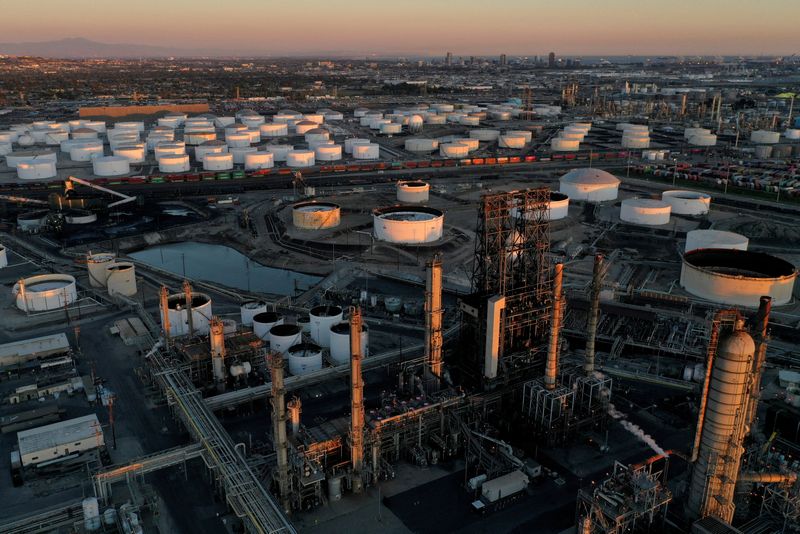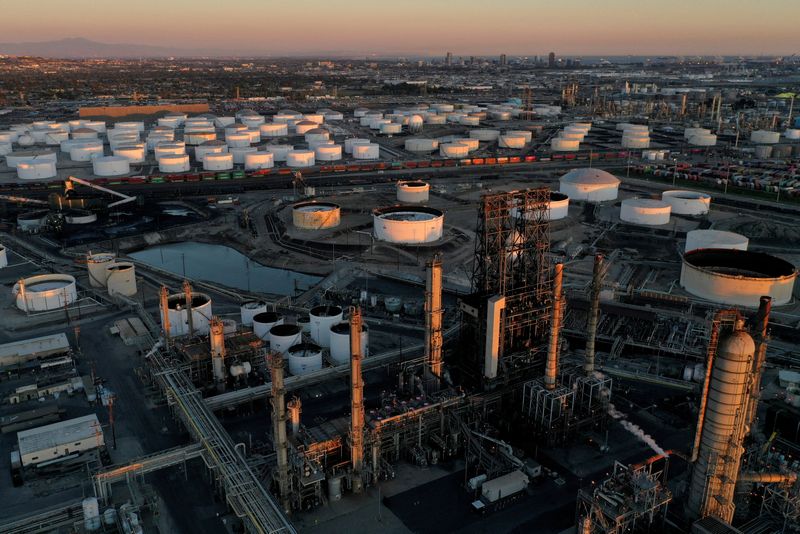
By Arunima Kumar
BENGALURU (Reuters) -Oil prices were steady on Wednesday, a day after benchmark Brent hit a one-month low, as a decline in U.S. oil stockpiles helped offset signs of weakening demand in China.
Brent crude oil futures were up just 1 cent, or 0.01%, to $83.74 a barrel by 1013 GMT. U.S. West Texas Intermediate crude futures were up 10 cents, or 0.12%, at $80.86.
“China’s weaker economic performance and rising expectations for a U.S. interest rate cut over the coming months have counterbalanced each other,” independent oil analyst Gaurav Sharma said.
In the United States, the world’s largest oil producer and consumer, crude oil inventories fell by 4.4 million barrels in the week ended July 12, market sources said, citing data from the American Petroleum Institute.
Analysts polled by Reuters estimated crude stocks would fall by 33,000 barrels. The U.S. Energy Information Administration will release its official storage report at 1430 GMT.
“The government data this afternoon is where the real story is, but the precursor of U.S. oil stocks in the API data does not exactly show much of an effect of Hurricane Beryl and the shutting down of some the infrastructure that stood in its path,” PVM Oil analyst John Evans said.
Aiding oil prices were U.S. retail sales, which were unchanged in June as a drop in receipts at auto dealerships was offset by broad strength elsewhere, a display of consumer resilience that bolstered economic growth prospects for the second quarter.
Rising geopolitical risk is also helping crude prices.
A Liberia-flagged oil tanker was assessing damage and investigating a potential oil spill after it was attacked by Yemen’s Houthis in the Red Sea, the Red Sea and Gulf of Aden Joint Maritime Information Center (JMIC) said on Tuesday.

Meanwhile, China, the world’s top oil importer, saw its economy grow 4.7% in the second quarter, official data showed earlier this week, the slowest growth since the first quarter of 2023, capping crude price gains.
“Any announcement from the Third Plenum in Beijing this week is likely to shape the market sentiment due to the size and importance of China’s oil demand growth,” said Rystad Energy’s senior oil analyst Svetlana Tretyakova referring to a key economic leadership meeting.
This post is originally published on INVESTING.



